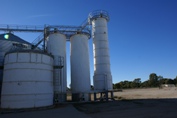More global use of fermented liquid feed

Although fermented liquid feed can have benefits for pig health and performance it is not always applicable in all regions of the world. Piggeries in hot climates for example may face difficulties in managing the temperature of the liquid feed. However, new insights show that fermented liquid feed can be used very well in hot areas in the US for example.
By©Emmy Koeleman
Fermented liquid feed has been lately much investigated in order to compensate the use of antibiotics in pig production. Fermenting a liquid diet with lactic acid bacteria has been shown to improve the quality of feed and to be beneficial to the health of the animals.
The use of liquid feeds in animals has created an opportunity for recycling of liquid co-products from the human food industry especially in the European pig industry. However, contradictory results have been obtained in feeding trials due to the variable conditions in each experiment. One of the key variables in production a palatable and high quality fermented product is temperature!
Australian piggery
A few weeks ago I visited an Australian piggery (20,000 growers) in Goondiwindi. I talked to Kenneth Cameron, general manager of the farm who installed a liquid fermentation system about a year ago. Although quite common in Europe, the Goondiwindi farm is one of the few Australian farms aiming to feed all the pigs on fermented feed.
However, soon after the installation, Kenneth found out that they couldn’t get the temperature low enough to ensure optimum fermentation of the liquids. “Ideally, the fermented liquid feed should be cooled down to 22 degrees Celsius. Here we could hardly get it below 27 degrees in summertime,” Kenneth explained to me. In Goondiwindi, the temperature can be over 35 degrees Celcius in summertime.
The low temperature in the tank is needed to get the lactobacillus bacteria growing. At a higher temperature level, unwanted substances get into the feed, such as propionic acid. “We therefore made the decision not to use the fermentation process, but just to stick with normal liquid feeding. The fermentation tanks (shown on picture) have found another destination now; they turned into water storage tanks” Kenneth explained.”
It is about control
The case of Kenneth is of course one example. Although ermented feed is still a very much European thing, farmers outside Europe are starting to use it more often as well. It is just a matter of keeping it under control, then it will work in every type of climate.











